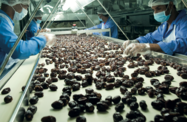The emirate’s retail sector is looking ahead to busier times, with solid sales growth expected and a swathe of new shopping developments set to be rolled out over the next 12 months. Such optimism is largely due to rising demand, which is currently fuelled by a young and increasingly affluent population, as well as the steadily growing number of overseas visitors.
According to the Statistics Centre – Abu Dhabi (SCAD), per-capita income reached $85,850 in 2010. As such, locals have significant spending power, and the emirate’s relatively young population are poised to ensure long-term growth for retail operators.
To accommodate current and anticipated demand, a flood of new retail space is set to come onto the market. Estimates by Jones Lang LaSalle (JLL), a real estate investment firm, put the amount of new retail area available at around 272,000 sq metres, twice the total of 2011.
Furthermore, there is the potential for further retail projects to be added to the development pipeline, with property consultancy Cluttons having identified shortages of outlet space in a key segment of the market. In a report issued in mid-April, the company said that property values at a number of new residential developments in Abu Dhabi were being weakened due to the lack of retail facilities.
“A shortage of retail facilities at many of the new residential developments needs to be addressed, the lack of which is seen as a culprit to falling values,” the report said. Some new projects, such as plans to open several retail units in the Marina Square development before the end of June 2012, would ease the situation, though the lack of retail space would remain an issue for many projects, the report added.
This wave of new retail space may also have a knock-on effect on established malls and shopping centres, prompting them to consider upgrading and modernising to maintain their appeal to existing clientele and to reach out to new markets. In mid-March, operators of the Al Wahda Mall announced that extensions to the shopping centre were almost complete, with the first of 256 new outlets being handed over to retailers, adding to the 200 already serving customers.
According to Matthew Green, the head of consulting at CBRE, an international property consultancy firm, despite Abu Dhabi being a strong market that is still undersupplied, some of the new developments may find it difficult to attract customers from the older, more-established malls.
“There is considerable supply coming on-line, which will lead to softening of rents, but the major malls and the ones that are established are likely to continue to do well,” Green told The National on March 16. “It is going to be difficult for the newer malls to come in and take consumers from those malls.”
While developers appear set to continue to roll out quality shopping projects, and retailers keen to take up the additional space, all players in the retail sector will need to keep an eye on the balance of supply and demand. According to some reports, Abu Dhabi will have around 1.8m sq metres of retail space by 2015, averaging out to around 1.7 sq metres per person. This is far greater than Europe’s average, which is just 0.23 sq metres, local media has reported.
It is likely, however, that the market can sustain such expansion. According to a recent report from JLL, higher levels of investment by the government will drive a new round of economic expansion and, ultimately, consumer demand.
The report, issued on April 21, said the spending power of the population, supported by increased tourism footfall, indicates “there remains significant latent demand for retail in the Abu Dhabi market, most of which is currently serviced by Dubai. The delivery of upcoming projects will help address some of this latent demand”.
With plans under way to boost its own offerings and encourage shoppers away from regional markets, Abu Dhabi looks set to maintain the quality and variance its local retailers are known for. As a result, the sector should be able to absorb the significant increase in sales and maintain its steady growth.

